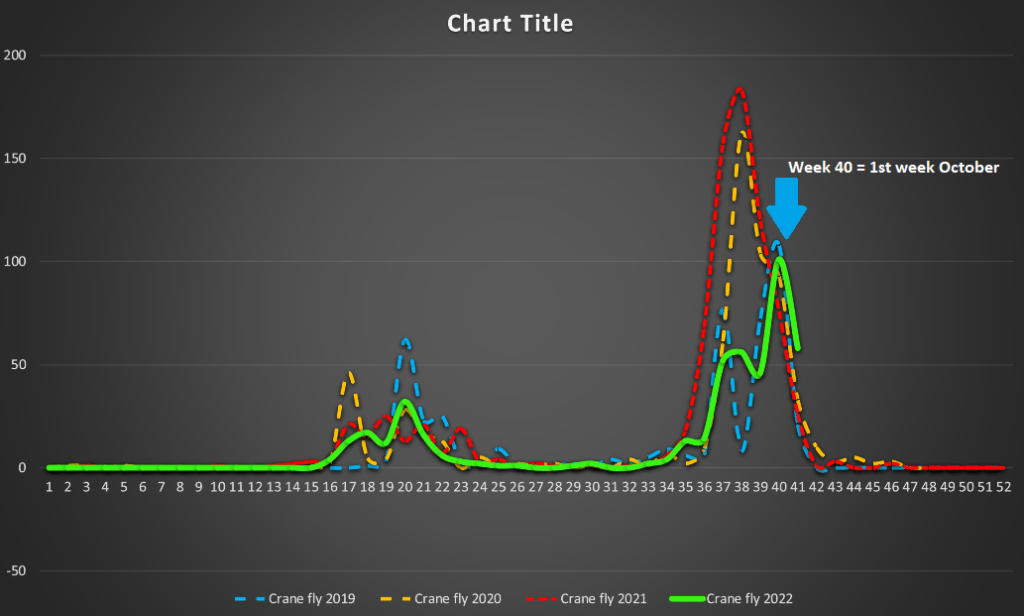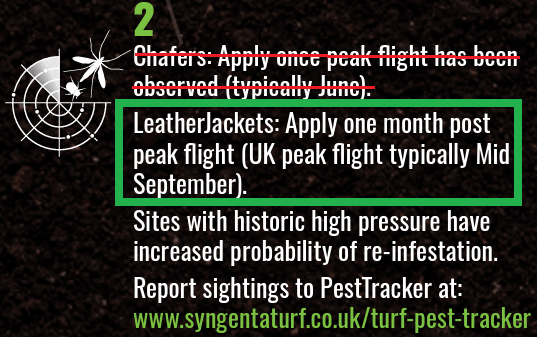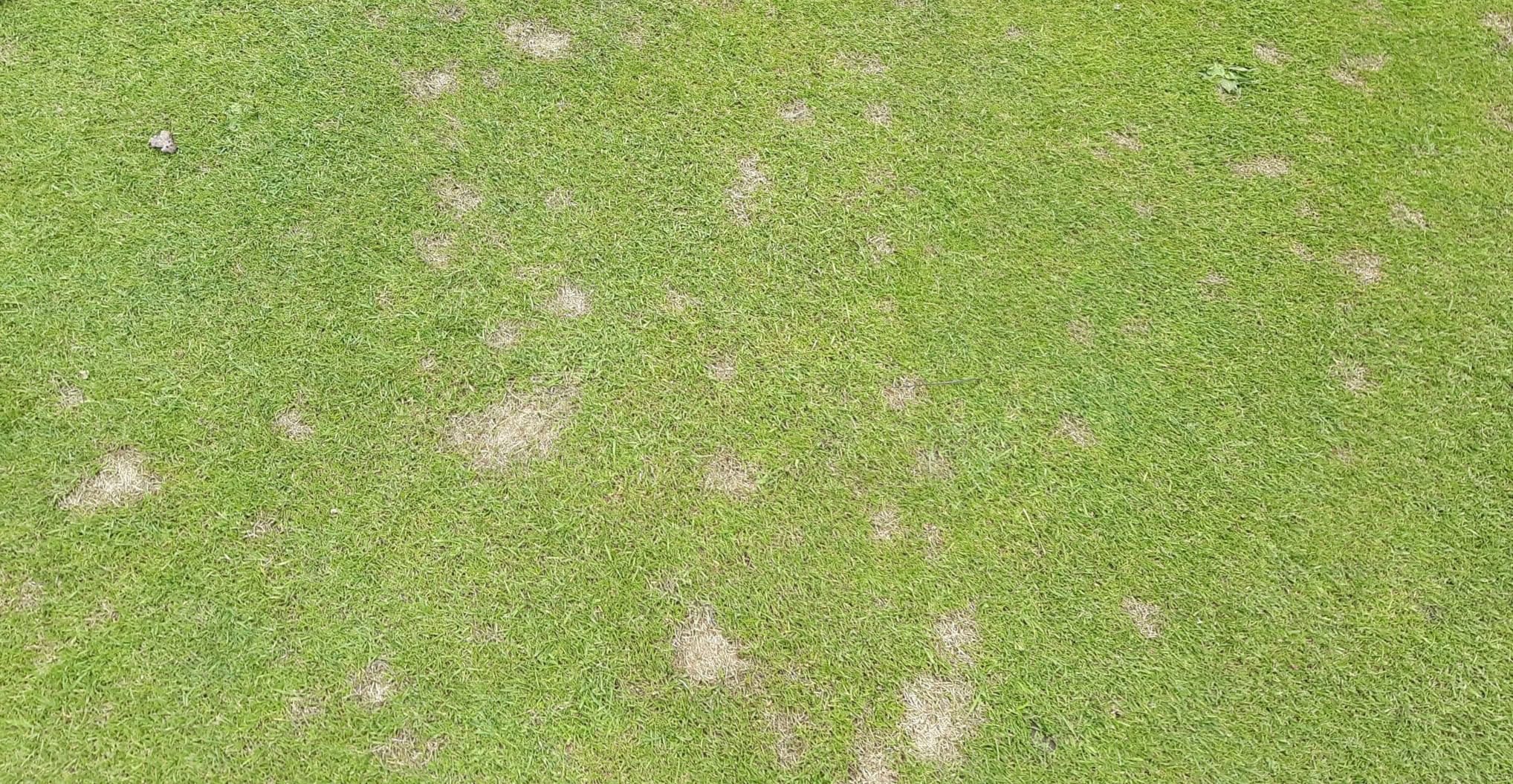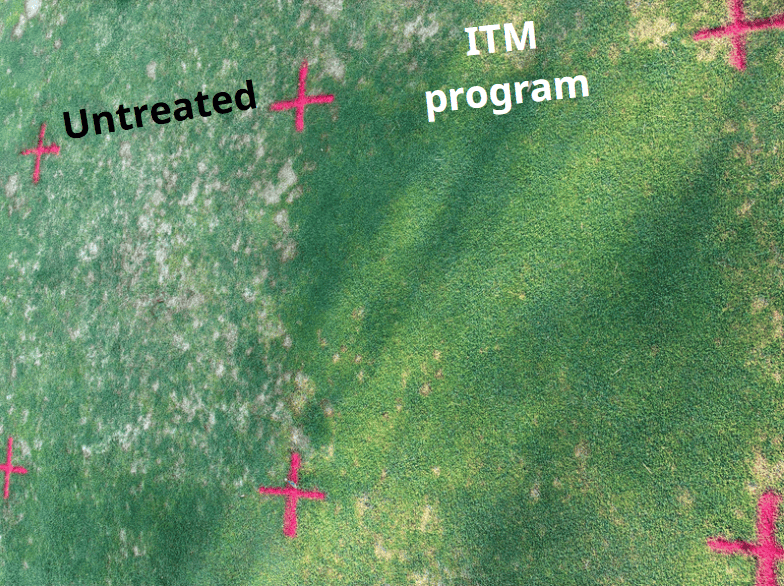First things first, this is not me saying “Get out there and spray” as we’ve discussed before we want to target applications 1 month post the peak flight to optimise control. For most, peak flight was the first week of October (average across UK) so looking to spray first week of November, but as we know there is a bit of a North/South divide when it comes to Cranefly flights.

I’m based in Cardiff, South Wales and have been down in Devon this week and have seen a few Cranefly at both locations, generally the further South the later the peak flight will occur, so we are probably seeing the last few stragglers. The most Northern areas may be looking to start applications this week or next.
SO, looking to that Acelepryn application below is the reasoning behind the first 3 points of the 7 point plan:
Point 1.

I think everyone is pretty good with this one. Targeting the early stage grubs/larvae (Leatherjackets in this case) is the best win we can make. I can see the temptation to apply when you see the worst damage, spring time when the grubs are big the damage can really get out of hand (we can’t do that with the EA, and I wouldn’t recommend it even if we could!)
Controlling leatherjackets is a little bit like fighting a bear; the bigger the bear the stronger its going to be, and the more likely the bear is to win the contest. Much better to have that same contest with a bear cub.
We won’t be physically fighting the Leatherjackets, but the smaller they are the less reserves they have to respond to outside influences, in this case the affect of the Acelepryn.
Note: I’m not recommending fighting a bear of any size, mother bears are ruthless in the defense of their young! I don’t want to read about an angry and confused Course Manager jumping in the local zoos bear enclosure.
Point 2.

As we’ve covered already, 1 month post peak flight ensures the Cranefly are all finished egg laying, and the smallest larvae are just beginning to hatch from eggs and feed as the product arrives in the grub zone.
Before this year the timing of the peak flight had looked fairly consistent, but the flight we’ve just had shows a peak a few weeks later. Thanks again to all who’ve been logging Cranefly sightings!
Point 3.

Mowing prior to application is mainly to ensure we don’t need to mow directly after application. We don’t want mowers to take any product away from the target site wherever possible.
I’m not going to be drawn on how long to leave it before mowing post application, as that will be site specific. But ideally we give time for the product to move down off the plant into the soil, so were not taking it away in the form of clippings.
Read the second part of the 7 Point Plan here.




